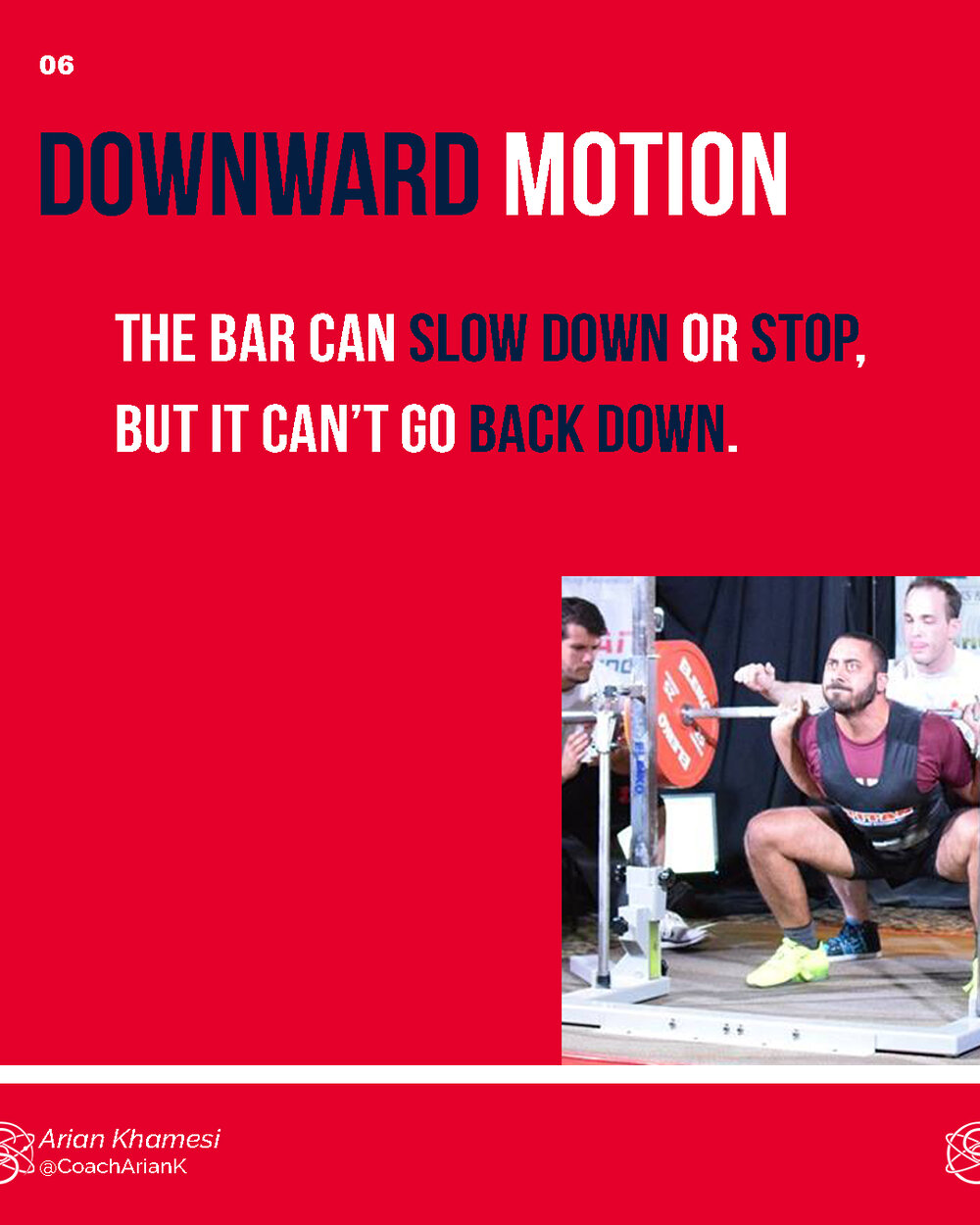As a competitor, it’s your duty to know what constitutes a good lift or a bad lift. Continue reading and check the carousel below to learn more about the squat!
1. Prior to squatting, you must setup in the proper position. This includes facing the front of the platform, having the bar across the back of the shoulders, fingers gripping the bar, standing upright, and having the knees locked. 𝐍𝐎𝐓𝐄: 𝐘𝐨𝐮𝐫 𝐭𝐡𝐮𝐦𝐛𝐬 𝐝𝐨𝐧’𝐭 𝐧𝐞𝐞𝐝 𝐭𝐨 𝐛𝐞 𝐭𝐨𝐮𝐜𝐡𝐢𝐧𝐠 𝐭𝐡𝐞 𝐛𝐚𝐫.
2. One of the biggest errors is not going deep enough. The top surface of the legs at the hip joint must be lower than the top of the knees. This failure is denoted with a 𝐫𝐞𝐝 𝐢𝐧𝐟𝐫𝐚𝐜𝐭𝐢𝐨𝐧 𝐜𝐚𝐫𝐝.
3. Another big error is not waiting for the commands. You must wait to receive the “𝐒𝐐𝐔𝐀𝐓” command at the beginning of the lift and the “𝐑𝐀𝐂𝐊” command at the end of the lift. This failure is denoted with a 𝐲𝐞𝐥𝐥𝐨𝐰 𝐜𝐚𝐫𝐝.
4. Another common error is downward motion of the bar. The IPF recently changed this from a yellow to 𝐛𝐥𝐮𝐞 𝐜𝐚𝐫𝐝, and the USAPL Rulebook will soon adjust for the change.
5. Watch out for soft knees! The knees must be locked at the start and end of the lift. There are no medical exemptions for this. This failure is denoted with a 𝐛𝐥𝐮𝐞 𝐜𝐚𝐫𝐝.
6. 𝐁𝐄𝗪𝐀𝐑𝐄: 𝐃𝐎 𝐍𝐎𝐓 dump the bar! You must stay with the bar and let the spotters assist with putting the bar back in the rack. Dumping the bar may lead to 𝐫𝐞𝐦𝐨𝐯𝐚𝐥 from the competition. This failure is denoted with a 𝐲𝐞𝐥𝐥𝐨𝐰 𝐜𝐚𝐫𝐝.
7. Other failures include the spotters touching the bar (yellow card), taking a step during the lift (yellow card), not standing upright at the beginning or end of the lift (blue card), using the rack to aid in the lift (yellow card), and the elbows touching the legs to aid in the lift (yellow card).
8. You’re now ready for white lights and PRs. 𝐆𝐨𝐨𝐝 𝐥𝐮𝐜𝐤!
If you have any questions about the squat, then comment below. And if you’re already an experienced USAPL competitor, then be sure to share this with the rookie competitors!
Icons made by Freepik from @flaticon











